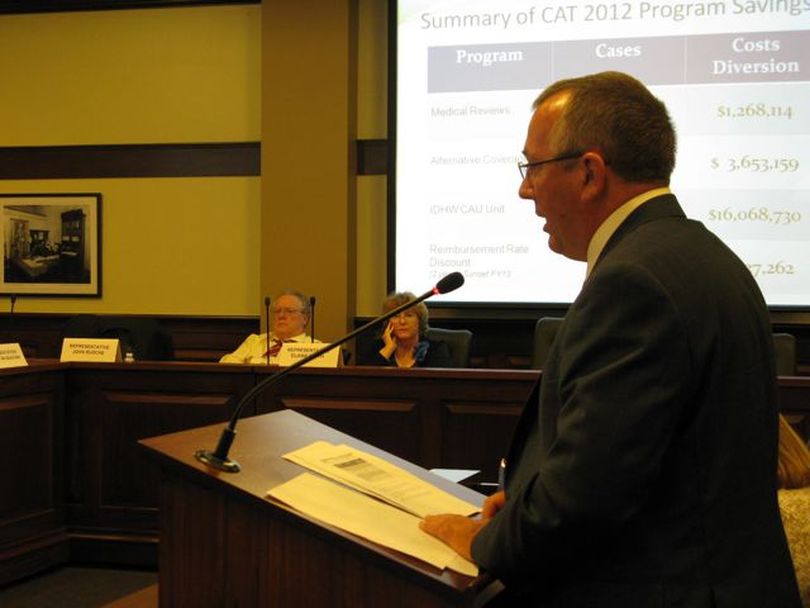CAT fund costs begin rising again…

Idaho's catastrophic health care fund, which covers care for indigent patients with no other coverage and is run through Idaho's counties, which each pay $11,000 per case before the fund kicks in, is starting to climb in costs again, CAT fund board Chairman Roger Christensen, a Bonneville County commissioner, told lawmakers on the Health Care Task Force this afternoon. Cost controls implemented in recent years dramatically slowed the expected growth, he said, but, "Unless we can come up with some kind of a rabbit out of a hat, we're going to see some of the trends start going back up."
Rep. John Rusche, D-Lewiston, a retired physician and CAT fund board member, congratulated Christensen and Sen. Dean Cameron, R-Rupert, on the savings found in the program in recent years, as part of an effort Cameron launched. "We've had roughly a 40 percent decrease over what would have been expected in the indigent costs," Rusche said. "So, Sen. Cameron, when you put that work group together up in the attic of the (Capitol) Annex, I don't think you realized what a good deal you were doing." He added, "But you're right, the easy wins are done. We can expect to see a 7, 8 percent increase in the total amount of CAT fund expenditures if we don't have some other alternatives."
The successful cost-cutting moves included a 5 percent discount on provider reimbursements, which will sunset in 2013; stepped-up efforts to identify alternative payers for specific patients; and a new federal reinsurance pool for people with pre-existing conditions who have been denied traditional insurance, which will expire in 2014. But the cost of health care has continued to rise. Last year, the CAT fund, between state appropriations and county spending, spent a little over $60 million and saw 1,292 cases; in the coming year, it expects 1,425 cases at an average per-case costs of $27,742 .
Christensen said Idaho's CAT fund system is "unique," in how it targets the same population that now is targeted for a state-option Medicaid expansion under the national health care reform law, and how it pays for their care. "It's one of the only, if not the only state, where the eligible population that would be picked up by the Medicaid expansion are (now) picked up by state general fund dollars and by county property tax dollars," Christensen said. "That's the safety net. And that's the majority of our clientele, are those single individuals without disabilities."
The proposed Medicaid expansion, which Idaho has not yet decided whether to sign on for, would cover that population with 100 percent federal funds for the first three years, phasing down to 90 percent federal funds by 2021; the state and counties now bear 100 percent of the CAT fund costs.
